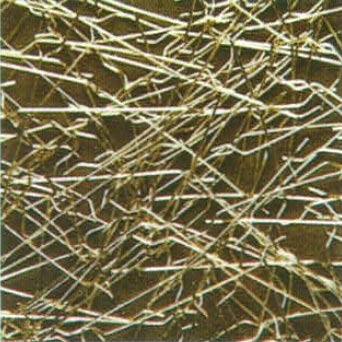Steel Fibres
Steel Fibre Additions to Refractory Products
- Refractory Products undergo high stresses during operation due to expansion, contraction, impact and thermal shocks.
- Refractory Concrete is a brittle material.
- The stresses initiate microcracks, which can rapidly deteriorate in macrocracking through the full lining thickness.
- Macrocracking destabilizes the refractory linings causing lining failure.
- The addition of steel fibres, typically 2 - 4% w/w, increases the capacity of the refractory lining to absorb more load, even after cracking has occurred.
- The flexural toughness of the refractory lining is increased substantially, thereby, increasing the life of the refractory, reducing overall costs.

Hooked End Drawn Steel Fibres
Hooked End Drawn Steel Fibres are made from cold drawn, high strength wire and shaped with hooked ends to give stronger pull out power. Hooked end drawn steel fibres are required in lower dosages than Melt fibres, due to their higher quality and performance. Hooked End Drawn Steel Fibres solves refractory problems, other fibres cannot fix.


Specifications:- Standard products:
|
Hooked End Drawn Steel Fibres
|
||
| AISI | LENGTH | DIA. |
| L.C. | 30 | 0.5 |
| 304 | 25 | 0.4 |
| 30 | 0.4 | |
| 310 | 25 | 0.4 |
| 30 | 0.4 | |
Melt Steel Fibres
Melt Steel Fibres are made from molten steel production by spinning from the surface. These fibres have an oxidised coating and are slightly deformed in shape. Melt fibres are the low cost solution for refractory problems.
Specifications:- Standard products:
|
Melt Steel Fibres
|
||
| AISI | LENGTH | DIA. |
| 446 | 35 | 0.5 |
| 25 | 0.5 | |
| 304 | 35 | 0.5 |
| 25 | 0.5 | |
| 310 | 35 | 0.5 |
